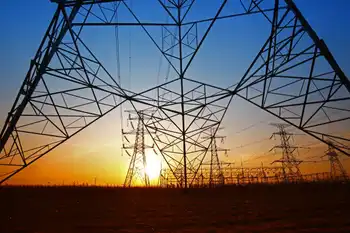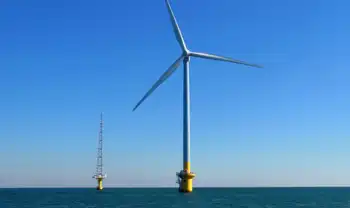AEP receives FERC approval to transfer generating assets
COLUMBUS, Ohio – - COLUMBUS, Ohio – American Electric Power received approval from the Federal Energy Regulatory Commission FERC to separate its Ohio generating assets from its Ohio distribution and transmission operations and transfer these assets to a competitive generation company and regulated affiliates. AEP is awaiting FERC approval of additional transactional agreements between AEP affiliates.
“With these approvals, we reached another milestone in the transition to full electricity competition in Ohio. The FERC decisions allow us to move forward with the ownership transfer of our Ohio generation-related assets into a separate unregulated generation company and to other AEP operating companies,” said Nicholas K. Akins, AEP president and chief executive officer. “We anticipate decisions from FERC on our other related filings soon and expect to fully separate our Ohio generation from our Ohio utility operations at the end of this year.
“We will continue to work with regulators in Kentucky, Virginia and West Virginia to seek the additional approvals necessary to transfer ownership of the Mitchell Plant and the AEP Ohio-owned share of the Amos Plant to Appalachian Power and Kentucky Power to help satisfy their existing and long-term generation requirements,” Akins said.
The FERC’s April 29 decision approved the transfer of AEP Ohio-owned generation to a new wholly owned company – AEP Generation Resources Inc. The FERC also approved further transfer of AEP Ohio’s two-thirds ownership 867 MW in John E. Amos Plant Unit 3 1,300 MW and ownership of 800 MW of the 1,600-MW generating capacity of Mitchell Plant to Appalachian Power as well as ownership transfer of the remaining 800 MW of Mitchell Plant to Kentucky Power.
Additionally, the FERC approved merging AEPÂ’s Wheeling Power utility into Appalachian Power.
AEPÂ’s application to terminate the interconnection agreement, or pool, that exists among AEPÂ’s utilities in the Midwest and for approval of a new Power Coordination Agreement among Appalachian Power, Kentucky Power and Indiana Michigan Power remains pending before the FERC, along with other tariff filings related to corporate separation. AEP anticipates implementing corporate separation and the other items in the related filings by Dec. 31, 2013.
American Electric Power is one of the largest electric utilities in the United States, delivering electricity to more than 5.3 million customers in 11 states. AEP ranks among the nationÂ’s largest generators of electricity, owning nearly 38,000 megawatts of generating capacity in the U.S. AEP also owns the nationÂ’s largest electricity transmission system, a 40,000-mile network that includes more 765-kilovolt extra-high voltage transmission lines than all other U.S. transmission systems combined.
AEPÂ’s transmission system directly or indirectly serves about 10 percent of the electricity demand in the Eastern Interconnection, the interconnected transmission system that covers 38 eastern and central U.S. states and eastern Canada, and approximately 11 percent of the electricity demand in ERCOT, the transmission system that covers much of Texas. AEPÂ’s utility units operate as AEP Ohio, AEP Texas, Appalachian Power in Virginia and West Virginia, AEP Appalachian Power in Tennessee, Indiana Michigan Power, Kentucky Power, Public Service Company of Oklahoma, and Southwestern Electric Power Company in Arkansas, Louisiana and east and north Texas. AEPÂ’s headquarters are in Columbus, Ohio.
Related News

Altmaier's new electricity forecast: the main driver is e-mobility
LONDON - Gross electricity consumption in Germany will increase from 595 terawatt hours (TWh) in 2018 to 658 TWh in 2030. That is an increase of eleven percent. This emerges from the detailed analysis of the development of electricity demand that the Federal Ministry of Economics (BMWi) published on Tuesday. The main driver of the increase is therefore the transport sector. According to the paper, increased electric mobility in particular contributes 68 TWh to the increase. Around 44 TWh of this should be for cars, 7 TWh for light commercial vehicles and 17 TWh for heavy trucks. If the electricity…




